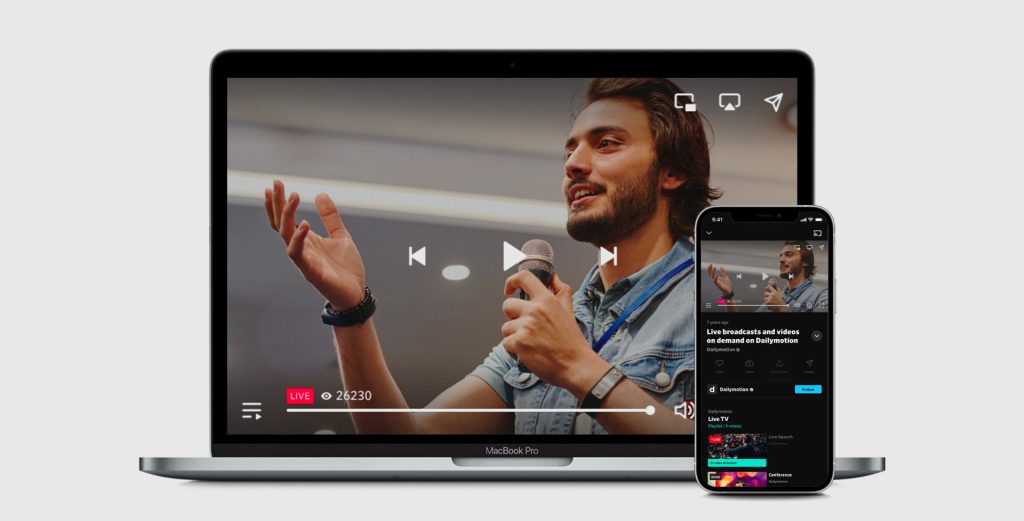August 3, 2023
Implementing Video Solutions for Effective Internal Communication

In today’s fast-paced and interconnected business landscape, effective internal communication is the cornerstone of success. While business owners and HR professionals understand the importance of keeping employees informed, engaged, and aligned, their efforts can be undermined by traditional methods of internal communication, which often fall short in capturing attention and fostering meaningful connections.
However, there is a world where your messages resonate deeply, where information is not just heard and forgotten, but truly understood and retained, and where your colleagues are not just passive recipients but active participants in the communication process. That world is not far-fetched thanks to videos – a dynamic and compelling method to captivate and engage your colleagues in ways that texts or images alone cannot.
If this is a topic that keeps you up at night, look no further! Let us walk you through the ins and outs of effective internal communication, as well as the use and the benefits of video solutions for your internal communication strategies.

What Is Internal Communication?
Internal communication refers to the exchange of information, ideas, and messages within an organization, with the aim of facilitating understanding, collaboration, and alignment towards organizational goals. Some common topics of internal communication include:
Updates and announcements
These include news about company performance, financial results, new products or services, changes in leadership, strategic initiatives, milestones achieved, and other significant organizational changes.
Goals and objectives
These are the strategic goals of the organization, as well as its mission and vision, to help employees understand the direction of the organization and their roles in achieving such goals.
Policies and procedures
Key policies and procedures, such as code of conduct, recruitment policy, internal labor rules, anti-discrimination and harassment policy, work health and safety policy, grievance handling policy, and social media policy, must be communicated internally to promote compliance, consistency, and professionalism.
Learning and development
Compulsory onboarding and training programs, as well as other optional workshops, conferences, and learning resources, make up an important part of an organization’s internal communication strategies, as they help employees be aware of key issues within the organization, adapt quickly to the new working environment, enhance their skills and knowledge, and support their overall professional growth.
Internal events and activities
Information on team-building activities, social events, charity initiatives, and other celebrations should be shared internally to foster a sense of community and engagement amongst employees.
Employee recognition and appreciation
Public acknowledgment of the accomplishments and valuable contributions made by employees significantly enhances their morale and motivation levels.
What are the formats of internal communication?
Internal communication can be done in various forms, including but not limited to:
- Verbal communication, such as face-to-face conversations, meetings, phone calls, town hall, presentations, etc.
- Written communication, such as email, text messages, instant messages, memos, reports, letters, collaboration tools, etc., and
- Visual communication, such as infographics, charts, graphs, posters, flowcharts, videos, etc.

What Is the Key to Effective Internal Communication?
The key to effective communication can be summarized in one word: clarity. It may sound simple; but to achieve clarity in internal communication, there are certain principles that business owners, HR professionals, and other stakeholders in an organization should adhere to, specifically:
Having clear objectives
Clearly define the purpose and goals of your communication effort. This will help you craft messages that align with your objectives.
Understanding audience
Consider the needs, preferences, and characteristics of your audience, and tailor your message accordingly and in a way that resonates with them. This will ensure that your message is received and understood effectively.
Keeping it simple and concise
Use clear and straightforward language to convey your message. Avoid unnecessary jargon that may confuse or alienate your audience.
Maintaining consistency
Uphold consistency in language, formatting, branding, and the message itself to avoid confusion and ensure accuracy.
Fostering two-way communication
Encourage open and transparent communication by creating channels for feedback, questions, and ideas from employees, then actively listen to their input and respond in a timely and constructive manner. This promotes a sense of engagement and involvement among employees.
Utilizing suitable communication channels
Consider the nature of the message, the urgency of the information, and the accessibility of different channels to choose the channels that are most effective. If possible, utilize a mix of channels such as email, videos, meetings, or instant messaging to reach a broader audience effectively.
Evaluating and improving communication strategies
Continuously evaluate the effectiveness of your communication strategies, by seeking feedback from employees, monitoring engagement metrics, and making improvements as needed.

How Can Videos Contribute to Internal Communication?
Given the basics of internal communication detailed above, videos undeniably hold great potential as a valuable communication tool for any organization. If utilized correctly, they will bring about great benefits, and even transform, an organization’s communication strategy, specifically:
Enhanced Clarity
Videos offer visual demonstrations and examples that can break down complex ideas, concepts, processes, and instructions, among others, in a simple and concise manner. This helps employees understand what is communicated better, leading to improved clarity in internal communication overall.
Time-saving and Efficiency
In many cases, videos allow for the delivery of information in a shorter time compared to other forms of communication, which saves time for both senders and receivers.
Improved Engagement
Videos captivate employees’ attention better than other forms of communication, as videos can evoke curiosity, interest, and emotions, through storytelling, music, and visuals. Additionally, audience can easily engage with video content, usually in real time, through comments, reactions, and other interactions. This allows for viewers’ better connection with the messages and retainment of information in the future.
Accessibility and Flexibility
Videos can be accessed at any time and from anywhere with an Internet connection. This allows employees to watch videos at their own convenience, which ensures that important information can and will reach everyone, irrespective of where they are or how busy they are.
Consistency and Standardization
Videos provide a consistent and standardized message, which minimizes the risk of misinterpretation or inconsistency that may occur through other forms of communication.
Measurable Impact
Video performance metrics, such as audience demographics, viewer engagement, click-through rate, etc., can be monitored and evaluated to provide insights into the organization’s communication impact. Beside these metrics, qualitative feedback from audience can be considered and collected as data for impact assessment. Such evidence altogether would contribute to the organization’s data-informed improvements in its internal communication strategies.

How Can Videos Be Used in Internal Communication?
With the list of key topics in internal communication, as well as the benefits that videos can have onto an organization’s communication strategies, there are several common use cases of videos in internal communication that an organization can begin with, namely:
Learning and Development (L&D)
This is one of the most common uses of videos in internal communication, in which videos are used for onboarding, compulsory training modules (including simulations and scenarios, tutorials, quizzes and other assessments, etc.), product and service demonstrations, and peer-to-peer learning (e.g., knowledge-sharing sessions, interviews, panel discussions, presentations, instructional videos, etc.), among other L&D opportunities.
Company Updates and Announcements
To create a more engaging and personalized experience for employees, as well as make the message more impactful and memorable to viewers, videos can also be used as a mean to deliver important company updates, announcements, or leadership messages.
Livestreams of Key Internal Events
With the rise of globalization and the “new normal” to workplace after COVID-19, livestreams are a great way for companies to engage with employees working remotely and/or working overseas, and make sure that these employees can participate in the events, regardless of where they are. For employees that cannot make it to the events, they can still access information through the video-on-demands (VOD) created after the livestreams.
Beside these common use cases, videos can be utilized more creatively in your internal communication strategies, such as company-wide video newsletters (instead of the traditional text-based newsletters), virtual office tours (for remote employees), employee-generated content (vlogs, recap, etc.), video contests, podcasts, and behind-the-scene videos.

How Can We Choose a Suitable Video Solution for Effective Internal Communication?
In the face of numerous video solutions in the market, determining which solution is the most suitable for an organization’s internal communication is not an easy feat, even when they have all the basics down. Therefore, we suggest the following factors that organizations should consider while choosing video solutions for internal communication:
Objectives
Different organizations have different objectives for their internal communication strategies. Therefore, make sure that you align your objectives with the features and functionalities of video solutions to acquire the right tools for the right goals.
Cost
Business owners and HR professionals should always look for a solution that can offer the best value for the limited resources (money and personnel, among others) that they have. Additionally, it always helps to start modest and utilize free trials.
Quality
It all boils down to the quality of the video solutions, as everyone wants high definition videos with seamless experience throughout. To achieve this, organizations should look into the technical aspects of the solutions, such as video encoding, adaptive bitrate streaming, content delivery network, and streaming protocol, among others.
Security
Internal videos are not meant to be shared to the public, hence protecting videos from unauthorized access is crucial. Look for platforms that offer robust measures like encryption, authentication, password protection, digital rights management, watermarking, among other security aspects.
Analytics
To improve internal communication strategies, organizations will need user feedback – and video performance data will contribute to that feedback pool. Therefore, another consideration should be given to whether the solution provides detailed, user-friendly, and up-to-date analytics and insights into videos, audience, and other essential data points.
Best Practice
As we constantly strive to improve internal communications, we want to highlight a best practice from the global communications group, Havas. They’ve successfully incorporated video content as an essential part of their internal communication strategy, using it notably for employee onboarding and training. The key to their success lies in using a reliable video solution.
Dealing with the challenge of securely distributing videos and managing roles and permissions, Havas chose Dailymotion’s user-friendly platform. Their experience underscores the significance of a secure, customizable, and easy-to-manage video solution. With Dailymotion, Havas uploaded 4773 videos and streamed 216,000 minutes of video content in 2022 without a single security issue.
To dig deeper into their journey, we invite you to Havas Case Study. This provides valuable insights for anyone keen on elevating their internal communication strategy to the next level.
Conclusion
In conclusion, the implementation of video solutions for internal communication is a game-changer for organizations seeking to enhance understanding, engagement, knowledge-sharing, and collaboration. By harnessing the power of videos, organizations can optimize their training programs, streamline communication processes, create a more connected workforce, and transform their internal communication strategies forever.
Choosing the right video solution is crucial, and Dailymotion’s video solution is a standout option. With favorable features and functionalities that suit your needs, decades of expertise, and dedicated customer support, organizations can unlock the full potential of internal communication and bring themselves to the next level. Contact us today should you be interest, and we will reach out to support you in no time!
